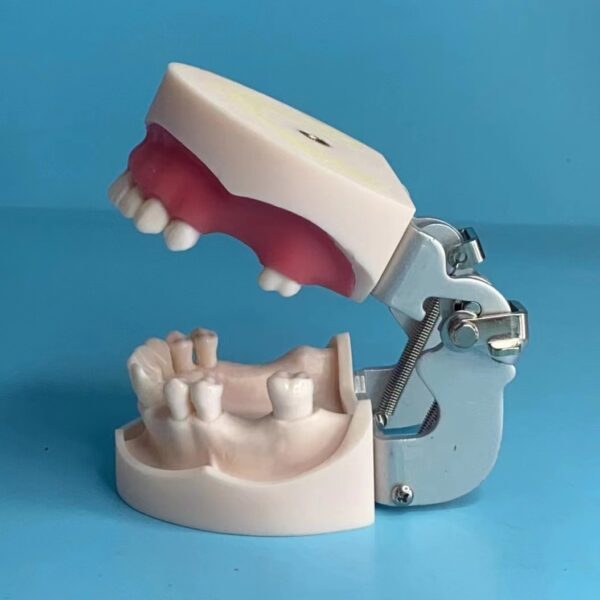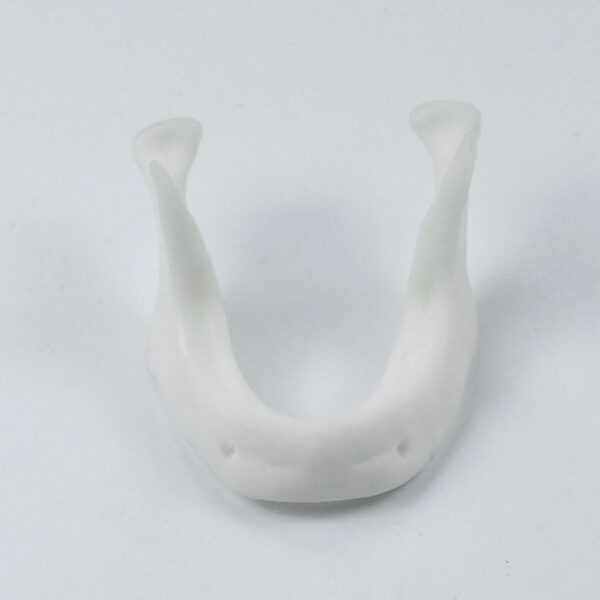




Apical Cyst Model Pathology
$50.00 Original price was: $50.00.$35.00Current price is: $35.00.
Free Shipping
(Except Lab Equipment and Zirconia Blocks Products)
Flexible Return Policy
Learn More About Our Return Policy
Advanced Order Tracking
Tracking Order with the Most Trusted Providers
Genuine Products
Products from Reputable Manufacturers
Multiple Shipping Options
DHL, FedEx, EMS, and UPS options
Apical Cyst Model – 5 Stage, designed to enhance communication between doctors and patients.
Order yours today to provide a better understanding of the condition and treatment options. Improve patient outcomes with this essential educational tool.
Free shipping.
| Weight | 0.5 kg |
|---|---|
| Dimensions | 10 × 10 × 7 cm |
Apical Cyst Pathology
A five-stage progress model that helps doctors and patients understand the progression of an apical cyst in a simple and easy-to-understand manner. This model is designed to aid communication between doctors and patients, enabling them to make informed decisions about treatment options.
Stage 1 – In this stage, the apical cyst is small and often asymptomatic. However, it can be detected through routine dental x-rays. At this stage, the cyst is usually left untreated, and regular monitoring is recommended to ensure that it does not progress.
Stage 2 – As the cyst grows, it starts to cause pressure on the surrounding teeth and bone, resulting in pain and discomfort. In this stage, the cyst needs to be addressed promptly to prevent further damage. Treatment options may include root canal therapy or surgical removal of the cyst.
Stage 3 – If left untreated, the cyst can continue to grow and cause damage to the surrounding bone and teeth. At this stage, surgical intervention is often required to remove the cyst and restore the affected teeth.
Stage 4 – In some cases, the cyst can lead to the formation of a fistula, which is a small opening on the gum. This stage requires immediate attention, as the fistula can become infected and cause further complications. Treatment options may include root canal therapy or surgical removal of the cyst and fistula.
Stage 5 – In rare cases, the cyst can progress to the point where it causes significant damage to the surrounding bone and teeth. At this stage, surgical intervention is required to remove the cyst and restore the affected teeth. This may involve complex surgical procedures such as bone grafting or dental implants.
The apical cyst model is an essential tool for doctors and patients alike, enabling them to understand the progression of the cyst and make informed decisions about treatment options. By using this model to explain the stages of an apical cyst, doctors can help patients understand the importance of early intervention and the potential consequences of delayed treatment.
We are committed to providing dental professionals with the highest quality lab equipment, products, and supplies. We understand the importance of receiving your orders on time and in perfect condition. We’ve partnered with leading shipping providers to offer reliable and efficient delivery services. Below, you will find detailed information about our shipping and delivery policies.
Our Shipping Partners
We are proud to partner with the following trusted carriers to ship our dental lab products worldwide:
- FedEx: Known for its fast and reliable service, FedEx offers a range of shipping options to meet your needs.
- DHL: With a global reach, DHL ensures your dental lab supplies are delivered safely, no matter where you are.
- UPS offers domestic and international shipping services; UPS is an excellent choice for timely deliveries.
- EMS: Ideal for international shipments, EMS provides secure delivery with the benefit of being more cost-effective.
Online Tracking
We understand that it’s important for you to stay informed about the status of your shipment. That’s why all orders come with online tracking options that allow you to track your package in real-time. Once your order is dispatched, we will send you a shipment confirmation email containing a tracking number and a link to track your package online. This way, you can easily stay updated on the status of your delivery and know exactly when to expect your order.
Shipping Times and Costs
- Processing Time: Orders are processed within 1-2 business days. Custom orders may take longer, and you will be informed accordingly.
- Delivery Times: Delivery times vary based on location and the selected shipping option. Typical delivery times are as follows:
- Domestic shipments: 2-5 business days
- International shipments: 5-14 business days
- Shipping Costs: Shipping costs are calculated based on the weight and dimensions of your order and the shipping destination. You can see the shipping cost at checkout before finalizing your purchase.
Packaging
We take great care in packaging your orders to ensure they arrive in perfect condition. Our products are securely packed to prevent damage during transit.
International Shipments
For international customers, please be aware that shipping times can vary significantly based on your country’s customs processes. Additionally, customers are responsible for any customs and import taxes that may apply. We are not responsible for delays due to customs.
Customer Service
Should you have any questions or concerns about your order’s shipping and delivery, our customer service team is here to help. You can contact us via email or phone; we’ll gladly assist you.














